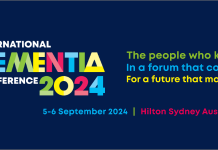In this guest post, Mr Andrew Stone, Managing Director Pacific at Rentokil Initial, outlines how aged care providers can safeguard residents by employing a 360-degree hygiene approach encompassing four key pillars: air, hand, surface, and washroom.
Aged care facilities play a crucial role in protecting some of society’s most vulnerable members, particularly in the face of seasonal changes and ongoing threats from COVID-19 and other contagious illnesses. Implementing best-practice hygiene measures can reassure residents and their families that aged care providers are doing everything possible to protect them from illness. In this regard, Initial Hygiene recommends a 360-degree hygiene approach encompassing four key pillars: air, hand, surface, and washroom, which create a hygienic environment for residents and employees.
Aged care residents are particularly vulnerable to health problems resulting from indoor air quality, given that they spend more than 90% of their time indoors[1], and contaminated air can lead to a range of health issues, including anxiety and depression, and declining cognitive function. To prevent such conditions, aged care providers should consider incorporating air purification solutions to improve air quality.
Air purification devices with a high-efficiency particulate air (HEPA) filter, which removes most micro-particles from the air, including dust, pollen, mould, odours, and smoke, should be the minimum requirement. Besides, UV-C technology devices, such as VIRUSKILLER, can play a significant role in improving indoor air quality by deactivating viruses, bacteria, mould, and other pathogens that pass through the filter system, reducing the spread of illnesses such as COVID-19. These devices remove 99.9999 per cent of airborne viruses and pathogens, including COVID-19, in a single pass, making them an excellent investment for aged care facilities.
Aged care providers must not only protect their residents but also their employees, who risk contracting illnesses while at work. A 2022 study found that 81% of aged care workers are concerned about the risk of workplace infection [2]. Additionally, workplace absenteeism in the aged care sector costs the industry more than $933m in lost productivity [3]. This issue could significantly affect the lives of vulnerable people, as staff shortages mean that residents may have no one available to care for them. A comprehensive hygiene protocol is, therefore, crucial to future-proof the sector and protect employees and residents against illnesses.
Implementing a best-practice hygiene protocol is an essential step for aged care providers to protect their residents and employees from the long-term health impacts of COVID-19 and other contagious illnesses. Rentokil Initial offers free hygiene audits to aged care providers, providing tailored solutions to meet their specific needs. Therefore, aged care providers must act now to ensure they have a best practice hygiene protocol in place to protect vulnerable, older Australians from the ongoing health impacts of COVID-19, and future-proof their business from the economic impacts of workplace absenteeism.
* When independently tested against Coronavirus DF2 (a surrogate for Coronavirus), Adenovirus, Influenza and Polio, the unit was found to kill 99.9999% of viruses on a single air pass.
[1] United States Environmental Protection Agency. (2000). National Air Quality and Emissions Trends Report. Raleigh: United States Environmental Protection Agency
[2]Frost & Sullivan. (2022). Absenteeism and Workplace Hygiene: The Cost of Absenteeism to Australian Businesses. Sydney: Frost & Sullivan.
[3] Frost & Sullivan. (2022). Absenteeism and Workplace Hygiene: The Cost of Absenteeism to Australian Businesses. Sydney: Frost & Sullivan.










